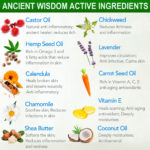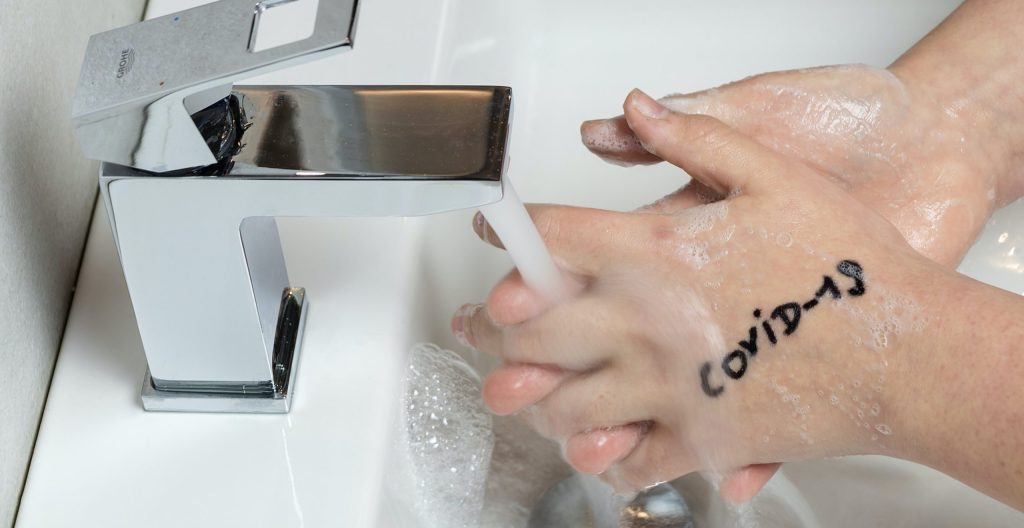![]()
![]() Since the beginning of the COVID-19 pandemic, we have been told about washing our hands to prevent transmission of the virus.
Since the beginning of the COVID-19 pandemic, we have been told about washing our hands to prevent transmission of the virus.
According to the guidelines, it should be done thoroughly for at least 20 seconds, as many times as we can – especially after coming in contact with people outside our household.
The signs in every office, station, cafe and restaurant were and still are there to remind us. Some workplaces such as nursing homes, hospitals and schools made it compulsory.
Workers falling into those “at risk” categories and people worried about catching the virus have got into the habit of washing their hands very often.
To protect ourselves and others, we’ve all followed the script. On Social Media people said they timed their washing to the “Happy Birthday” song, or Britney Spears’ “Oops!… I Did It Again” chorus. Many Catholics across Italy took that as a chance to pray. Two Lord’s Prayers and some heavy-duty hand disinfectants made them feel protected by the higher realms AND science.
When soap and water were not readily available, alcohol-based hand rubs (ABHRs) with at least 60% of alcohol have been recommended as an alternative. But now, more than a year after the start of the pandemic, many people are seeing their hands turning red or becoming itchy or flakey. Others are dealing with pustules, infections and pain.
These are the common symptoms of Contact Dermatitis due to over-diligent hand washing. The latest research shows this type of dermatitis is on the rise – especially in people with sensitive skin.
But what is Contact Dermatitis?
Contact dermatitis is an inflammatory response of the skin to an external allergen or irritant. It is caused by chemicals or metals that have a toxic effect or create an immune response in the body.
In simple terms, overexposure of the skin to certain substances, such as the chemicals in hand disinfectants can cause inflammation. This manifests with redness, scaling, swelling and pustules on hands.
 Photo by Andrius from Pexel
Photo by Andrius from Pexel
There are two types of Contact Dermatitis:
- Irritant Contact Dermatitis (ICD), which is a response of the skin to direct chemical damage that occurs in most people
- Allergic Contact Dermatitis (ACD), which is experienced by people with allergies or particularly sensitive skins.
Until recently, it was believed that Allergic Contact Dermatitis was a rare condition. Unfortunately, data indicates it is very common and affects close to 20% of children.
In some patients, the disorder is chronic and can significantly affect the quality of life.
But the good news is that most cases of Contact Dermatitis can be managed with simple measures
If you’re wondering why some people suffer from Contact Dermatitis and some don’t, the answer is simple: our bodies are all different. We have different levels of skin sensitivity, as well as different lifestyles and jobs that put us in contact with various substances.
People with oversensitive skin and people with higher exposure to chemicals, such as nurses and frontline workers who need to follow rigid hygiene protocols, are prone to suffer from Contact Dermatitis.
But hand disinfectants are not the sole offenders when it comes to hand dermatitis. There are a few other culprits in the common household and beauty products that you want to stay away from.
CHEMICALS TO AVOID
Dioxane
Derived from synthetic coconut (not Mother Nature’s coconut!), dioxane is a harmful chemical that can affect the kidneys, the brain, and the liver. It is found in liquid soap, shampoo and bubble bath. In many countries, the law does not require dioxane to be listed as an ingredient on product labels because the chemical is a contaminant produced during manufacturing. This highlights the importance of using natural products as much as possible.
Triclosan
Triclosan is used to help prevent bacterial contamination. It is a known endocrine-disruptor that interferes with hormone levels in the body. Triclosan is found in hand and body washes, deodorants, toothpastes, hair products, lotions and shaving gels
Formaldehyde
Formaldehyde is a common chemical found in soap, deodorants, makeup, nail polish, shampoos, creams, mouthwashes and many household products.
You might not know it is also found in vaccines and it is used to embalm dead bodies! This chemical causes skin irritations and burns, and exposes the body to diseases by weakening the immune system. It can also affect the respiratory system and cause uneven heartbeat, fatigue, and headaches.
Parabens
Parabens are preservatives used in a wide variety of beauty products to prevent the growth of microbes. Known to disrupt hormone function, they can be found in shampoos, conditioners, lotions, scrubs, cleansers, and are linked to increased risk of breast cancer and reproductive toxicity
PEGs
PEGs (also known as Polyethylene Glycol) are chemicals that should be avoided, especially if you have sensitive or damaged skin, as they can cause irritation and systemic toxicity. Even more concerning, PEGs are often contaminated with measurable amounts of ethylene oxide and 1,4-dioxane, which are carcinogens. PEGs can be found in makeup, sunscreen, hair products and liquid hand soap.
Fragrance
Can’t imagine lathering up in the shower without a nice, sweet smell? Think again. Whilst they seem harmless, fragrances can cause nausea, respiratory tract issues, long-lasting dizziness, serious headaches and rashes. They have also been linked to cancer, reproductive toxicity, allergies and sensitivities.
Diethanolamine
DEA is another chemical that you should be wary of. Used as a wetting agent in shampoos, lotions, creams and other cosmetics, it can cause liver and kidney cancer.
Chlorine
Chlorine is a naturally occurring element that is also a very dangerous toxin. It has many uses, from disinfecting to bleaching. Chlorine causes extreme drying of the skin, eczema and dermatitis, as witnessed by many of my patients. Lots of them are children who often swim in chlorinated swimming pools. But this is avoidable: there are now alternatives to keep pools sanitised, such as silver‐copper ion generators.
Chlorine has also been used to disinfect our drinking water because it controls the growth of unwelcome bacteria, such as E. coli and Giardia. Therefore, chlorine contamination can happen when showering or drinking tap water. Long-term exposure to chlorine leads to the production of free radicals, which are carcinogenic and cause tremendous damage to our cells.

Daniele Levis Pelusi on Unsplas
Scientific research shows that “Contact Dermatitis is a readily treatable condition and should not cause any deviation of proper hand hygiene”. However, this doesn’t mean that we should disinfect our hands every time we can.
It’s enough to wash our hands before or after key moments, like eating, going to the bathroom, entering and leaving public places. This is important as we don’t want to erode the skin’s natural barrier, which prevents harmful substances from entering our bodies.
We should also find a balance between looking for protection with the right products and trusting our bodies’ innate immune system, which CAN protect us.
Don’t give in to fear. Research from the University of Minnesota has scientifically proved that fear weakens our immune system and can cause cardiovascular damage, gastrointestinal problems and other health conditions.
Now that we know what we should avoid, let’s focus on solutions, shall we?
PREVENTION AND TREATMENT
To treat Allergic Contact Dermatitis successfully, it is crucial to identify the allergen that is causing the skin reaction so it can be avoided. Once the cause is known, we can use several management techniques and solutions that are effective for people with Irritant Contact Dermatitis, as well as Allergic Contact Dermatitis.
1. Use household and beauty products without harmful chemicals
time you buy hand hygiene or any other beauty or household products, check the list of ingredients and make sure it doesn’t contain any of the substances stated above.
2. Wash your hands only when needed
I mentioned it already, but this is very important.
Do not wash your hands constantly out of fear, or because other people are doing it. And if you are in a job with strict hygiene protocols, consider using protective barrier methods, such as the one below.
3. Protect your hands with gloves
Protective barrier methods shield the hands from harsh detergents or exterior substances like dirt and micro-organisms that can get into skin creases or open wounds.
The most common ones are cotton gloves. People wear them under rubber gloves or gardening gloves to protect the skin. Some people wear them at night to prevent them from scratching the irritated skin.
4. Make dietary changes
When caring about our skin, we shouldn’t stop at what comes in contact with your body from the outside. What we eat and drink is also very important for the prevention and treatment of Contact Dermatitis.
If you have itchy, dry, or flakey skin, you can improve your diet in 4 ways:
- Hydrate by drinking 8-9 glasses of filtered water daily
- Alkalise your PH by increasing fresh fruits and vegetables
- Eliminate artificial sweeteners, preservatives, flavourings and colours
- Increase Omega 3 Essential Fatty Acids, e.g. wild salmon or hemp seeds
5. Wash your skin with the right products
Replace harmful soaps and detergents with products that are gentle and easy on the skin, especially if you have an overly reactive skin type.
LindPark Creations Naturals, Shampoo & Body Wash for Eczema and Dermatitis is perfect for people with dry, flakey, itchy skin and scalp. It quickly restores moisture, reduces the itch and delights with a fresh, citrus scent from pure aromatherapy oils
6. Use natural moisturisers
Natural moisturisers help rebuild the skin barrier, without introducing any nasty substances into the body. They soothe irritation, promote wound healing and nourish the skin.
 Photo by Alina Vilchenko from Pexels
Photo by Alina Vilchenko from Pexels
Protecting your hands naturally
Many of my patients have suffered from Dermatitis or Eczema for several months. Some for a lifetime. For them, I needed a product that was gentle on the skin but powerful in action.
I couldn’t find anything with these characteristics on the market, so I decided to develop my own product.
LindPark Creations Eczema Dermatitis Lotion is one of my go-to products. I’ve relied on it for many years because of its powerful ingredients and effectiveness.
Castor Oil is the hero in this formula – a traditional remedy that is very effective in treating skin inflammation and pain. Hemp Seed and Chickweed help relieve itchiness, whilst calendula reduces inflammation and helps repair cracked or dry skin.

Your hands are one of the most useful tools you have – certainly one you use every day!
Stop the pain and discomfort and get your confidence back.
Find out more about the Eczema Dermatitis Calm Herbal Skin Lotion
What you will love about my Eczema Dermatitis Skin Lotion:
- Reduces itchy, dry skin
- Feeds the skin with nutrition, building healthy new skin cells
- Reduces infections in the skin, thanks to its anti-parasitic properties
- Reduces inflammation
- Gentle on babies and super-sensitive skin types
- Gentle on the face
- Reduces redness
- Helpful with other allergic skin conditions
- No steroids, parabens, phenols, chemicals
- No synthetic fragrances
- No sulphates, sulphites or phosphates
- No artificial colours
This is what people who use the cream say:
“I have been using Linda’s Eczema Calm Herbal Skin Lotion for the past 7 months and I love it. It is both calming and healing for my sensitive skin. I use it several times a day, always after washing my hands. And at night when I go to bed, which is lovely as I adore the fragrance.” – Kim Kennedy
“I cannot speak highly enough of the Eczema Dermatitis Lotion that I purchased from LindPark Creations. I used it for my scalp and I had immediate relief from the itching and soreness. A little goes a long way and this lotion is by far the best I have ever used. Would highly recommend.” – Ellen Stevenson
Try the Eczema Dermatitis Calm Herbal Skin Lotion
Sources:
Pubmed: Contact Dermatitis from Hand Hygiene Practices in the COVID-19
PandemicPubmed: Contact Dermatitis
University of Minnesota: Impact of Fear and Anxiety
Bad Chemicals found in Soaps that must be avoided
https://www.safecosmetics.org
https://www.ewg.org

